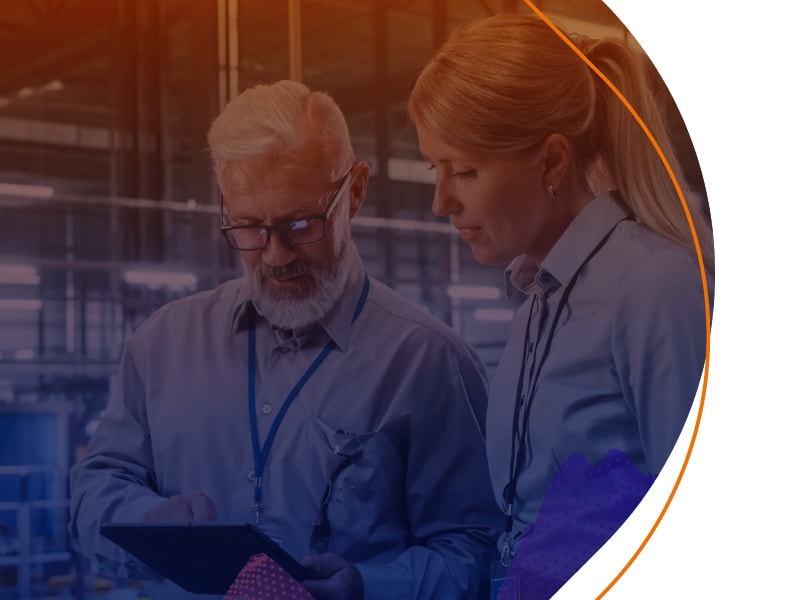Home > AssistEdge > Blogs > Navigating the future of work with task mining
Navigating the future of work with task mining

Table of Contents
In the ever-shifting business landscape, the success of a company lies in its prowess to artfully craft inventive strategies, harness the boundless potential of innovation to adeptly navigate the ever-changing currents of technological advancements, and conquer the formidable obstacles presented by fierce competition. This is where task mining emerges as a transformative solution, diving into task-level activities to unlock unparalleled efficiency, optimize workflows, and drive data-driven decision-making. By capturing and analyzing task-level data, organizations gain insights into operational processes, revealing bottlenecks and automation opportunities. Task mining bridges the gap between planned processes and execution, propelling organizations forward with continuous improvement, in terms of visibility, and delivering exceptional value to customers.
In this dynamic business environment, organizations need powerful artificial intelligence (AI) to navigate challenges and seize opportunities for improved visibility. However, organizations should not be worried about this concern as Task mining holds immense promise as it unleashes invisible inefficiencies, enabling optimization and automation of manual tasks. By aligning planned processes with actual execution, companies make informed decisions, driving efficiency gains and adapting to market dynamics. Task mining becomes the compass for organizations, optimizing resource allocation, improving task prioritization, and empowering them to embrace AI and achieve success in the future of work.
Gartner anticipates generative AI to account for 10% of total data by 2025, up from under 1% currently. By 2023, organizations leveraging distributed enterprise benefits are projected to achieve revenue growth 25% faster than competitors. Furthermore, Gartner predicts that cloud-native platforms will underpin over 95% of new digital initiatives by 2025, a significant surge from the 40% adoption rate in 2021.
What is task mining, and why is it essential for businesses to implement it?
Task mining is a transformative tool that optimizes operations, enhances productivity, and enables data-driven decision-making. By analyzing task-level data, businesses uncover hidden inefficiencies, streamline workflows, and eliminate time-consuming activities, leading to significant time and resource savings. Task mining also empowers organizations to make informed decisions based on concrete evidence, setting realistic targets, and allocating resources effectively.
Additionally, task mining drives automation by identifying repetitive and rule-based tasks suitable for automation. By automating these tasks, businesses free up human resources, ensure accuracy, and improve overall efficiency. Task mining plays a vital role in compliance management and risk mitigation by monitoring activities and identifying potential risks or deviations from standard procedures. This proactive approach helps businesses avoid penalties and reputational damage.
Moreover, task mining fosters a culture of continuous improvement by continuously analyzing task data. Organizations can identify optimization opportunities, implement changes, and measure their impact, ensuring ongoing evolution and adaptation to market dynamics. Task mining fuels innovation, agility, and efficiency, allowing businesses to thrive in a rapidly changing landscape and stay ahead of the competition.
Essentially, task mining empowers organizations to simplify business processes, make data-driven decisions, drive automation, guarantee compliance, and nurture continuous improvement. It is a stimulus for transformative change, thus enabling businesses to unleash their complete potential and navigate the intricacies of the modern business landscape with conviction and prosperity.
Key values task mining adds to businesses
Implementing task mining offers numerous benefits for organizations seeking to unlock their full potential. Here are some key advantages:
Increased efficiency: Task mining uncovers inefficiencies, enabling organizations to streamline processes, eliminate redundant tasks, and reduce cycle times. By identifying bottlenecks and optimizing workflows, organizations can achieve significant productivity gains.
Enhanced process understanding: Task mining provides a comprehensive view of how tasks are performed across different systems and applications. This deep understanding facilitates process standardization, leading to improved consistency and quality. Endorsing this, Deloitte’s 2021 report highlights a notable upswing in organizations adopting intelligent automation, as 73% of them embark on this transformative journey. This reflects a remarkable 58% surge compared to the figures reported in 2019. Crucial to driving this trend are two key technologies: process mining and task mining.
Automation opportunities: By analyzing task data, organizations can identify tasks that are repetitive and rule-based, suitable for automation. Task mining serves as a catalyst for intelligent automation initiatives, allowing organizations to leverage technologies like robotic process automation (RPA) to streamline manual tasks.
Data-driven decision making: Task mining generates valuable insights that aid decision-making. By analyzing task durations, dependencies, and variations, organizations can make data-driven decisions to optimize resource allocation, improve task prioritization, and enhance overall operational performance.
Compliance and audit trail: Task mining captures a comprehensive audit trail of user actions, facilitating compliance monitoring and regulatory reporting. It ensures transparency, accountability, and adherence to industry standards and regulations.
Application of task mining in some major domains
Real-world examples illustrate the diverse applications of task mining across industries. Let us explore a few notable use cases:
Finance and accounting: In financial organizations, task mining enables the analysis of accounts payable and receivable processes, identifying discrepancies, and streamlining invoice processing. It helps in automating repetitive financial tasks, reducing errors, and improving financial reporting accuracy.
Customer service: Task mining plays a vital role in customer service operations. By capturing interactions between customer service representatives and customers, organizations can identify common pain points, optimize response times, and personalize customer experiences.
Healthcare: Task mining is revolutionizing healthcare by improving patient care and operational efficiency. It enables the analysis of clinical workflows, identifying bottlenecks and opportunities to optimize processes, leading to better patient outcomes, and reduced administrative burden.
Supply chain management: Task mining facilitates end-to-end visibility in supply chain operations. By analyzing task data, organizations can optimize inventory management, streamline order processing, and improve logistics, resulting in faster delivery times and reduced costs.
What are the strategies to overcome challenges in task mining?
To overcome challenges in task mining, organizations can employ the following strategies:
Define clear objectives: Set specific goals for task mining implementation to guide the process and focus efforts on achieving valuable insights and improvements.
Ensure data quality and accessibility: Invest in data cleansing and normalization techniques to ensure high-quality data for meaningful analysis. Make the data easily accessible and well-organized to facilitate efficient task mining.
Foster collaboration and stakeholder engagement: Engage business process owners, IT teams, and subject matter experts to gain comprehensive insights and alignment. Collaborative efforts lead to better outcomes and adoption of task mining solutions.
Build a scalable infrastructure: Establish a robust and scalable infrastructure capable of handling the processing and storage requirements of task mining. Evaluate and invest in hardware, software, and cloud-based solutions as needed.
Continuously monitor and evaluate: Establish key performance indicators (KPIs) and metrics to measure the effectiveness of task mining initiatives. Continuously assess outcomes and refine the approach based on gained insights.
Implement change management and training: Prepare employees for changes in workflows and processes through effective change management strategies. Provide training and support to ensure they understand the benefits and have the necessary skills to leverage task mining insights.
Prioritize privacy and security: Comply with privacy regulations and implement robust data security measures. Use encryption, access controls, and data anonymization techniques to protect sensitive information.
Start small and scale: Begin with a pilot project or limited scope to validate the effectiveness of task mining. Learn from initial implementations, address challenges, and gradually expand the scope based on success achieved.
By implementing these strategies, organizations can effectively overcome challenges in task mining, maximize its benefits, and drive successful implementation across their operations.
Things to consider while implementing task mining
Here are some of the key considerations for implementing task mining:
These considerations will help guide your implementation of task mining and enable you to derive meaningful insights from your data
Future Outlook
Task mining will have a significant role in the future workplace, shaping digital transformation and automation. It will provide deep insights into processes, enabling organized workflows, elimination of redundancies, and augmented productivity. Task mining will prioritize areas for improvement and aid companies adapt efficiently to ever-changing business needs.
Furthermore, task mining will continue to lead automation efforts by recognizing m and rule-based tasks apt for automation. It offers a data-driven approach to prioritize automation based on user behavior and process complexity. This leads to streamlined operations, freeing up employees for higher-value tasks that need creativity and critical thinking. Task mining, combined with automation technologies like RPA and AI, will enhance efficiency, accuracy, and scalability in processes.
Overall, task mining’s evolving role will empower organizations to optimize processes, drive productivity, and achieve greater operational efficiency in the future workplace.
Task mining with AssistEdge
In today’s evolving work environment, organizations are reimagining work dynamics to maximize productivity in remote and in-office settings. Task mining, a cutting-edge solution, offers a way for organizations to closely examine their processes and track employee productivity during remote work.
Task mining involves real-time collection of user data, capturing interactions such as clicks, keystrokes, and data entry within applications or machines. By analyzing this data, organizations can uncover insights and optimize their processes for enhanced efficiency.
Despite its potential, task mining remains largely untapped. According to the findings of the Intelligent Automation 2022 Benchmarking Survey, the adoption rate of this particular technology among shared service firms is below 30%.
To unlock the benefits of task mining, EdgeVerve and SSON have collaborated to produce a report. This report explores how task mining can enable process excellence in the remote work environment, offering long-term value through continuous process transformation, improved workforce visibility, and enhanced data privacy for employees.
By embracing task mining, organizations can adapt to the new work landscape, drive productivity, and gain valuable insights for operational excellence, regardless of whether their employees work remotely or in traditional office settings.
Download the report for more information. https://www.edgeverve.com/assistedge/task-mining-drive-process-excellence/
Final Thoughts
Task mining presents a transformative opportunity for organizations to optimize work processes, enhance operational efficiency, and thrive in the future of work. With its ability to uncover granular insights into task-level activities, task mining empowers organizations to identify bottlenecks, streamline workflows, and leverage automation possibilities. This data-driven approach enables informed decision-making, ensures regulatory compliance, and fosters a culture of continuous improvement.
In an ever-evolving landscape, embracing task mining is essential for organizations to maintain competitiveness. By implementing robust task mining strategies, organizations can position themselves as trailblazers in the future of work, equipped to navigate challenges and capitalize on emerging opportunities. By embracing task mining, organizations can unleash the untapped potential within their operations, propelling them towards unparalleled success in their journey forward.
Hence, seize this game-changing opportunity, harness the power of task mining with AssistEdge, and unlock the full potential of your organization as you embark on a transformative path to success.


Possibilities Unlimited
Possibilities Unlimited
Inspiring enterprises with the power of digital platforms
More blogs from EdgeVerve →